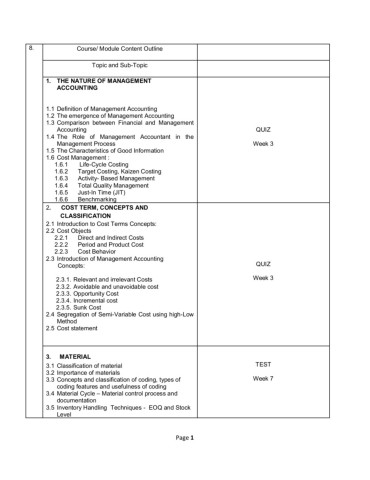

For example, banks tend to have a large number of total assets in the form of loans and investments. A large bank might have $2 trillion in assets and generate similar net income to an unrelated company in another industry. Although the bank’s net income might be similar and have high-quality assets, its ROA might be lower than the unrelated company.
- The company owns several manufacturing plants, plus the tools and machinery used to make widgets.
- However, in the case of services companies where investments in Assets are minimal, the ROA will be pretty high.
- And thus, the interpretation of the ratio would be much more holistic.
- After-tax return on assets is a financial ratio that shows the percentage of after-tax income generated by a company’s investment in assets.
One year of a lower ROA may not be a concern if the company’s management team is investing in its future and it’s forecasted to increase profits over the coming years. As a result, companies with a low ROA tend to have more debt since they need to finance the cost of the assets. Having more debt is not bad as long as management uses it effectively to generate earnings. Below is the balance sheet from Exxon’s10K statement showing the 2021 and 2020 total assets. ROA is best when comparing similar companies; an asset-intensive company’s lower ROA might appear alarming compared to an unrelated company’s higher ROA with fewer assets and similar profit.
Section of Colgate, we note that the overall Net sales decreased by as 7% in 2015. First, as we have been given Operating Profit and Taxes, we need to calculate the Net Income for both companies. We took EBIT for calculating Return on Assets Ratio because this would give a holistic picture of the company. And thus, the interpretation of the ratio would be much more holistic. Then we would take the figure at the beginning of the year and the end of the year and `.find an average of the total figure.
ROE and the DuPont Identity
Operational costs can include cost of goods sold , production overhead, administrative and marketing expenses, and amortization and depreciation of equipment and property. A solvency ratio is a key metric used to measure an enterprise’s ability to meet its debt and other obligations. It’s always best to compare the ROA of companies within the same industry because they’ll share the same asset base.
ROA is calculated by dividing a firm’s net income by the average of its total assets. In other words, the impact of taking more debt is negated by adding back the cost of borrowing to the net income and using the average assets in a given period as the denominator. Interest expense is added because the net income amount on the income statement excludes interest expense.

The measure is often calculated using average equity over a period due to the mismatch in the income statement and balance sheet. Return on equity and return on assets are two of the most important measures for evaluating how effectively a company’s management team is doing its job of managing the capital entrusted to it. The primary differentiator between ROE and ROA is financialleverage or debt. Although ROE and ROA are different measures of management effectiveness, the DuPont Identity formula shows how closely related they are. Return on assets is a measure of how efficiently a company uses the assets it owns to generate profits.
The larger total asset figure must be divided into the net income, creating a lower ROA for the bank. Return on assets compares the value of a business’s assets with the profits it produces over a set period of time. Return on assets is a tool used by managers and financial analysts to determine how effectively a company is using its resources to make a profit. A ROA of over 5% is generally considered good and over 20% excellent.
Video Example of Return on Assets in Financial Analysis
However, when we look at the Return on Assets Ratio of Box Inc, we note that it has been negative. It implies that the company cannot generate returns concerning its deployed capital. A typical ROA will vary depending on the size and industry that a company operates in. Be careful when comparing the ROAs of two companies in different industries.
But if that company takes on financial leverage, its ROE would be higher than its ROA. By taking on debt, a company increases its assets thanks to the cash that comes in. Assuming returns are constant, assets are now higher than equity and the denominator of the return on assets calculation is higher because assets are higher.
Operating return on assets is similar to the traditional return on assets ratio but uses operating income in the numerator as opposed to net income. OROA is used to determine a company’s operating efficiency by revealing the amount of income generated per dollar invested in its operating assets. It excludes assets that are not part of its normal business operations – such as investments in other companies that it may hold. Return on Assets is a type of return on investment metric that measures the profitability of a business in relation to its total assets. This ratio indicates how well a company is performing by comparing the profit it’s generating to the capital it’s invested in assets. The higher the return, the more productive and efficient management is in utilizing economic resources.
Calculating the ROA of a company can be helpful in comparing a company’s profitability over multiple quarters and years as well as comparing to similar companies. However, no one financial ratio should be used to determine a company’s financial performance. Once you’ve determined the average value of a company’s assets, divide net profit by average assets and multiply it by 100 to get the percentage. A more sophisticated ROA calculation takes into account that the value of a company’s assets changes over time. To factor this into your calculation, use the average value of assets the company owned in a given year, rather than the total value of its assets at year end. Therefore, these companies would naturally report a lower return on assets when compared to companies that do not require a lot of assets to operate.
Therefore, return on assets should only be used to compare with companies within an industry. Net income is the net amount realized by a firm after deducting all the costs of doing business in a given period. It includes all interest paid on debt, income tax due to the government, and all operational and non-operational expenses. Remember that ROA is most useful for comparing companies in the same industry, as different industries use assets differently. For example, the ROA for service-oriented firms, such as banks, will be significantly higher than the ROA for capital-intensive companies, such as construction or utility companies.
Benefits of Using Operating Return on Assets
Ryan Eichler holds a B.S.B.A with a concentration in Finance from Boston University. He has held positions in, and has deep experience with, expense auditing, personal finance, real estate, as well as fact checking & editing. To learn more about ROAS and contribution margin, check out our online roa meaning course oneCommerce Financial Modeling. This course will show you, step by step, how to model the economics of a marketing campaign for an eCommerce business. Revenue from ads is not necessarily a good indication of economic benefit because Return on Ad Spend may be considered a vanity metric.
Companies with a low ROA usually have more assets involved in generating profit, while companies with a high ROA have fewer assets. Return on equity is a similar financial ratio to ROA, and both can be used to measure the performance of a single company. However, if you compared the manufacturing company to its closest competitors, and they all had ROAs below 4%, you might find that it’s doing far better than its peers. As a general rule, a return on assets under 5% is considered an asset-intensive business while a return on assets above 20% is considered an asset-light business. Total-debt-to-total-assets is a leverage ratio that shows the total amount of debt a company has relative to its assets.
What is ROAS?
As noted above, one of the biggest issues with ROA is that it can’t be used across industries. That’s because companies in one industry have different asset bases than those in another. So the asset bases of companies within the oil and gas industry aren’t the same as those in the retail industry. ROA shouldn’t be the only determining factor when it comes to making your investment decisions.
In fact, it’s just one of the many metrics available to evaluate a company’s profitability. This is why when using ROA as a comparative measure, it is best to compare it against a company’s previous ROA numbers or a similar company’s ROA. To understand where these banks stand in terms of comparison, we can take an average and compare each bank’s performance. Return on Assets of General Motors (5.21%) is greater than that of Ford (3.40%) for FY2016. It relates to the firm’s earnings to all capital invested in the business.
The equity multiplier is a calculation of how much of a company’s assets is financed by stock rather than debt. Return on equity and return on assets are two key measures to determine how efficient a company is at generating profits. The OROA can be used to compare with peer companies, used to determine the trend of company performance, and as an indicator of how well a company is using its assets to generate operating income. A rising ROA may indicate a company is generating more profit versus total assets. Companies with rising ROAs tend to increase their profits, while those with declining ROAs might be struggling financially due to poor investment decisions.
Industries that are asset intensive won’t generate that much income compared to the industries which are not asset intensive. For example, if we consider an auto industry, to produce auto and, as a result of that, profits, the industry first needs to invest a lot in the assets. Thus, in the case of the auto industry, the ROA won’t be that higher. Return on Assets is an important metric for gauging the profitability of a company. It represents a company’s net income as a percentage of total assets. However, it is not the only relevant metric, and investors should make sure to look at the full picture when they compare different companies.

Recent Comments